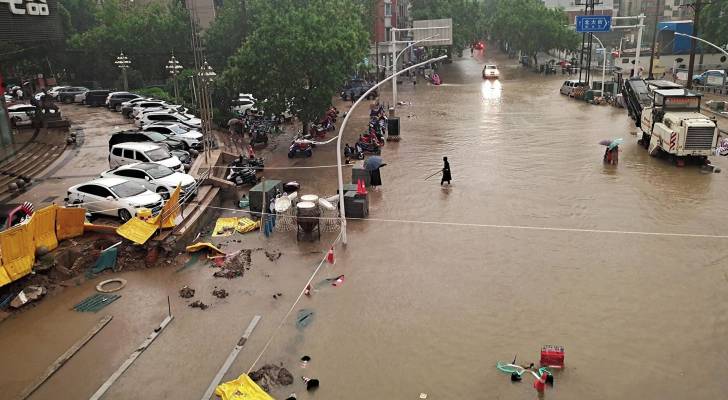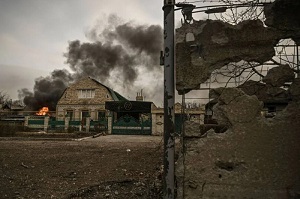At least 60 dead as extreme rainstorms ravage northern China

Roya News
Torrential rainstorms sweeping across northern China have left at least 60 people dead, caused massive flooding, and severely disrupted life in several regions. The capital Beijing and the neighboring Hebei province were among the hardest hit.
Tragedy at elderly care center
One of the deadliest incidents occurred at the Taishitun Town Elderly Care Center in Beijing’s mountainous Miyun district, where at least 31 residents died after floodwaters surged into the facility. The center, located upstream of the Miyun Reservoir, housed 69 people—55 of whom had functional impairments—along with staff members. Only 48 were rescued in time.
The district’s party secretary acknowledged failures in disaster preparedness, admitting that the facility was not included in evacuation plans because the area had previously been considered safe. He described the incident as a “bitter lesson.”
Regional toll and infrastructure damage
Beijing’s deputy mayor confirmed 44 deaths within the capital and reported nine people still missing. In Hebei province’s Chengde and Xinglong areas, at least 16 people died, including eight in a landslide, and another eight remain missing.
Floodwaters have damaged more than 24,000 homes, destroyed 242 bridges, and washed away over 750 kilometers of roads. More than 300,000 people across the affected regions have been impacted. Around 80,000 residents have been evacuated, and over 130 villages lost power.
Rainfall extremes linked to climate change
Regions near Beijing recorded up to 573.5 millimeters of rain in just a few days—nearly equivalent to the area's average annual rainfall. In Miyun district, rainfall reached record highs not seen in over a century.
The Qingshui River, normally a minor stream, swelled to 1,500 times its usual flow, overwhelming local infrastructure and pushing reservoir levels to dangerous highs.
Meteorologists have linked the severe weather to climate change, warning that extreme rainfall and flooding events are becoming increasingly common across China.
Official response
President Xi Jinping has called for swift and comprehensive action to protect lives and property. Local governments have launched extensive rescue operations, mobilized emergency personnel, and activated the highest level of flood emergency response.
As cleanup efforts continue, officials face growing scrutiny over disaster preparedness and infrastructure planning, especially in areas previously believed to be safe from flooding.
Latest News
-
 Russian attack on Ukraine capital kills one, wounds more than 40
Russian attack on Ukraine capital kills one, wounds more than 40
-
 King, Dutch PM discuss humanitarian catastrophe in Gaza
King, Dutch PM discuss humanitarian catastrophe in Gaza
-
 At least 60 dead as extreme rainstorms ravage northern China
At least 60 dead as extreme rainstorms ravage northern China
-
 Jordan begins legal action over concealed assets linked to Muslim Brotherhood
Jordan begins legal action over concealed assets linked to Muslim Brotherhood
-
 Portugal considers recognizing Palestinian state in September
Portugal considers recognizing Palestinian state in September